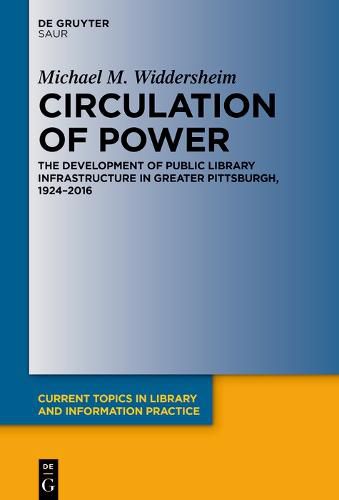Readings Newsletter
Become a Readings Member to make your shopping experience even easier.
Sign in or sign up for free!
You’re not far away from qualifying for FREE standard shipping within Australia
You’ve qualified for FREE standard shipping within Australia
The cart is loading…






This title is printed to order. This book may have been self-published. If so, we cannot guarantee the quality of the content. In the main most books will have gone through the editing process however some may not. We therefore suggest that you be aware of this before ordering this book. If in doubt check either the author or publisher’s details as we are unable to accept any returns unless they are faulty. Please contact us if you have any questions.
What is the public sphere, how is it best described, and what role does it play in modern life? These questions have attracted considerable attention within library and information science circles over several decades, especially regarding public libraries. Circulation of Power contributes to this discussion by proposing a new research framework and new methods for analyzing public sphere communication. Using extensive data gathered from an urban public library infrastructure, this historical case study demonstrates how public sphere communication shaped the infrastructure's development over time, producing both changes and continuities across the case's nine periods. Two new conceptual tools-circuits and decisions cycles-form the study's research framework, and a new explanatory theory-RLCr, or "Releaser," theory-accounts for why the infrastructure developed as it did. Consideration of competing theories reveals that public sphere communication remains the best explanation for infrastructural development. This book's meticulous historical narrative of the greater Pittsburgh case, supplemented by its groundbreaking theory and innovative mixed methods design, is of interest to practitioners, academics, and general readers alike.
$9.00 standard shipping within Australia
FREE standard shipping within Australia for orders over $100.00
Express & International shipping calculated at checkout
This title is printed to order. This book may have been self-published. If so, we cannot guarantee the quality of the content. In the main most books will have gone through the editing process however some may not. We therefore suggest that you be aware of this before ordering this book. If in doubt check either the author or publisher’s details as we are unable to accept any returns unless they are faulty. Please contact us if you have any questions.
What is the public sphere, how is it best described, and what role does it play in modern life? These questions have attracted considerable attention within library and information science circles over several decades, especially regarding public libraries. Circulation of Power contributes to this discussion by proposing a new research framework and new methods for analyzing public sphere communication. Using extensive data gathered from an urban public library infrastructure, this historical case study demonstrates how public sphere communication shaped the infrastructure's development over time, producing both changes and continuities across the case's nine periods. Two new conceptual tools-circuits and decisions cycles-form the study's research framework, and a new explanatory theory-RLCr, or "Releaser," theory-accounts for why the infrastructure developed as it did. Consideration of competing theories reveals that public sphere communication remains the best explanation for infrastructural development. This book's meticulous historical narrative of the greater Pittsburgh case, supplemented by its groundbreaking theory and innovative mixed methods design, is of interest to practitioners, academics, and general readers alike.